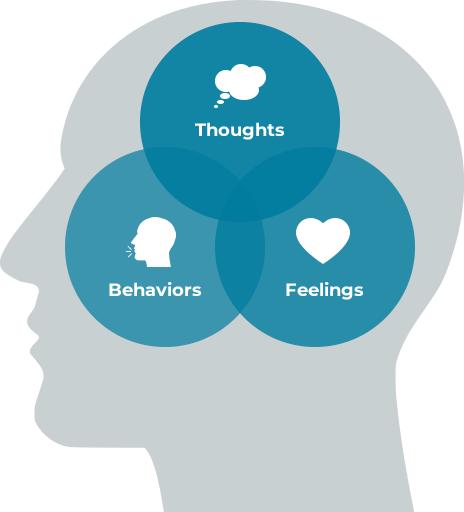Providing in-person and online appointments
According to the National Institute of Mental Health, research has demonstrated that cognitive-behavioral therapy is highly effective in treating depression and anxiety disorders. Cognitive therapy can modify or eliminate thought patterns that contribute to anxiety or depression symptoms. Individuals may be unaware of or unable to stop automatic negative, fearful distortions in thinking that cause the feelings and stress reactions that are bothering them. Clients learn to identify those thoughts, attitudes and underlying beliefs, stop the automatic thinking, create and instill a positive attitude.

Are you seeking a therapist who employs Cognitive Behavioral Therapy and fast-acting techniques to assist with:
The key premise of CBT is that individuals can learn more effective coping strategies to address these issues, thereby improving their mental health and reducing symptoms. Our team of mental health professionals use it to treat and manage mental health conditions and emotional concerns. CBT proposes that psychological issues stem from three main sources:
DBT is a more specific form of CBT that focuses on developing positive coping skills for emotional regulation and social interaction. DBT also helps patients find ways to accept themselves, feel safe and manage their emotions to help regulate potentially destructive or harmful behaviors.
ACT is variation of CBT that is particularly helpful for OCD. ACT is a mindfulness based therapy that focuses on accepting unwanted thoughts and emotions and in acting in ways that align with personal values. Act helps patients make room for their emotions, acting in ways that align with personal values.

Behavior therapy includes a specific range of stress and anxiety reduction techniques such as breathing exercises, meditation, mindfulness, exercise, diet, biofeedback, relaxation training, and guided imagery. A series of these recorded tools and techniques are available in the Self Help Tools section of this website.
Cognitive behavioral therapy (CBT) also involves overcoming fears by practicing desired actions, such as public speaking, social interactions, flying, driving over bridges, and visiting certain places. This process, known as exposure therapy or desensitization, is done gradually, starting with visualization and then moving to real-life practice. Using all the cognitive-behavioral tools mentioned above, clients create a positive feedback loop of comfort, success, and confidence.